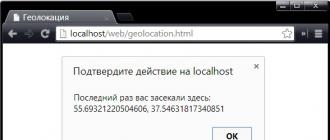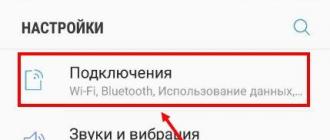The inability to delete a folder or a separate application file is a common problem in OS Windows, from the old XP version to the new "dozen". If you're trying to delete a file without closing the program, that's one thing. In this case, it is enough to close a running application, for example, a game, and the issue will be resolved. But in other cases, it will be necessary to apply certain actions to solve the problem using system or program methods.
These errors are often encountered when trying to delete a file or an entire folder:
- the file cannot be deleted because it hangs in the task manager (busy with the process);
- the file cannot be deleted because it is opened in some program;
- the action requires administrator permission.
Before starting the process, make sure that the deleted file will not cause the operating system to become unstable. When cleaning your computer from unnecessary "garbage", do not delete system files, without which its stable operation is impossible.
Files occupied by the process can be deleted both by the system itself and by third-party programs. In the article, we will tell and show in screenshots how such files are deleted in Unlocker, DeadLock and Live CD. The first two programs are free and suitable for unprepared users.
If you are trying to delete files such as hiberfil.sys, the methods discussed in this article do not apply to them. In this case, you should familiarize yourself with the instructions for disabling "hibernation", the power-saving mode of the PC operating system, or with setting the hidden system paging file pagefile.sys. Removing the Windows.old folder can also help.
Removing a file without additional programs
If the file cannot be deleted because it is busy with a process, the system will inform you about it. In this case, the notification will contain the name of the process due to which deletion is impossible. Most often, files are "occupied" by the main Windows Explorer process. And if the file is "released", it can be easily deleted.
You can close the process in the task manager. To run it, do the following:
- If you have Windows XP or "seven", press the key combination Ctrl + Alt + Del.
- If you have a "eight" or "ten", press Win + X and select the task manager.

But to delete a file occupied by the main process of the Explorer program, it is not enough, just to remove the task. It will only have to be removed using the command line. First, run it, deactivate the explorer.exe task, and then delete it by typing del full_path_to_ your file.
Now, to return to the standard view of the Desktop, you need to restart the main Windows Explorer process. This is done in the task manager. On the "File" tab, select "Run new task" and in the window that opens, select "explorer.exe".

The process is restarted and the desktop looks standard.
Deleting a locked file using a bootable flash drive or disk
Boot the operating system from any Live CD, such as a bootable flash drive, USB stick, OS recovery disc. When booting from the Live CD, either the command line or the standard operating system graphical interface can be used. When you boot the OS from any USB drive, the hard drive partitions may have different letters. In order not to be mistaken when deleting the file, it is better to use the dir command. For example, the command "dir d" will show all folders stored on this drive.
If you boot the system from a flash drive or installation disk for the "seven" and "eight", after loading the language selection window or at another stage, start the command line using the Shift and F10 keys. But you can also use System Restore. Here you can see a similar situation with changing drive letters, so be sure to also use the dir command.
Using DeadLock to Unlock and Delete Files
Many users who previously used the free Unlocker program are gradually switching to an alternative option - DeadLock. In the last year, along with the Unlocker distribution, unnecessary programs have been downloaded and installed on the computer without the user's knowledge. Also, the program is perceived ambiguously by antivirus programs and browsers.The free utility DeadLock works in the same way: unlocks and deletes files. The declared functions also have the ability to change the owner of a file, but we have not tested it.

So how the program works. If the file cannot be deleted because it is busy with a program process, start DeadLock and select File. Now add your file to the program list and click. Three actions are now available to you: Unlock, Remove and Move.

The peculiarity of DeadLock is that after unlocking the file, it does not add this action to the Explorer program.
Free Unlocker program to unlock files that are not deleted
Until some time, we have already written above, the Unlocker program enjoyed great love of users. She easily, without problems and quickly deleted any file occupied by the process.Using the program is easy: click on the file you want to delete and unlock it.

The program works the same as DeadLock: kills the process and then deletes the file. But it also has distinctive advantages: the program is able to shoot even those processes that are not shown by the dispatcher.
Why the file or folder is not deleted
The official website of the operating system developer corporation gives little information about why it is sometimes impossible to delete certain folders and files.What can interfere with deleting a file or folder
You may not have sufficient rights to change the file and folder, and then delete it. The file may not be deleted also due to certain settings of the PC administrator.Another option is also relevant - when the file works in a certain program. The problem may be solved by closing all running applications.
Why, when I try to delete a file, Windows says that the file is in use
If, when deleting a file, the system displays an error about its use by the program, you must close it. For example, you want to delete a folder with Word, but you cannot, because at the moment you are working with a document of this program. Therefore, if you close the document, the folder will be deleted. Or you are trying to delete files while someone is working with them (if you have a home network).After deleting all files, an empty folder remains
The solution to the problem is to close all programs or restart the PC.Even users who are not familiar with a computer know about such a simple operation as deleting files and folders.
As a rule, it is very simple, and an unnecessary object is instantly moved to the trash or deleted irrevocably.
However, in some situations, pressing the Delete button or using the Shift + Delete key combination does not work - Windows 7 refuses to delete the file. What to do in such a situation?
How to delete files that are not deleted by Windows 7
Causes of the problem
The file or folder may not be deleted for various reasons. As a rule, the problem is that the object is busy with some process. Because of this, you cannot erase:
- executable files (.exe) of running games and other programs;
- system files responsible for the functioning of Windows and hardware resources - drivers, etc.
- editable and viewable text and graphic files;
- playable audio and video files;
- files that are downloaded from the Internet or uploaded to the network using download managers, browsers, torrent clients.
The solution to this problem is very simple - an active process using the file to be deleted must be closed. This can be done in several ways, which will be discussed below.
Another reason is the lack of user rights. Some files, such as system files and read-only files, can only be deleted by the system administrator. You can get access rights through the file properties, the "Security" menu - in it you need to give yourself full access.

It is important to take into account that the Windows 7 system does not just give the user the rights to delete some files - without them, the computer may stop working normally. Therefore, if you do not have access to this function, you should make sure that the uninstallation will not harm you before trying the methods described below.
In order to delete non-removable files and folders, you can use:
- system tools;
- command line;
- third-party programs;
- another system.
Closing an active process
If the file is not deleted due to the fact that some process is using it, the system will give an error when trying to delete. The error window will display the name of the interfering process and information about the file to be deleted. Windows 7 prompts you to close the program and try again.
The easiest way to "kill" the interfering process is using the task manager. It opens in Windows 7 like this: press the key combination Ctrl + Alt + Del and select the task manager from the screen that appears.
The main dispatcher window will show all currently active processes. Find the one that was listed in the error message, select it and click the End Task button.

If the process you want is not found, just restart your computer and try to delete the file immediately after starting the system. If it does not work, start the computer in safe mode, in which only system processes can work, and delete the file in it.
If the explorer.exe process interferes
Explorer.exe is the process responsible for displaying the desktop along with all the shortcuts, as well as the taskbar, start menu, tray. Therefore, if you just close it, you may not be able to delete the file - the folder containing it cannot be opened. There are several solutions to this problem:
- Open the desired folder in advance.
- After closing the process, press Win + R, type cmd. A command line will open, in which you need to write the command "del file_address" (for example, del C: \\ Users \\ Public \\ document.txt).
To delete an entire folder, instead of del, you need to write rmdir. If you add the / s operator to this command, the folder will be deleted regardless of problems with the individual files it contains.
After the problem is resolved, you need to return the desktop. To do this, restart your PC or press Win + R and write in the line explorer.exe.
Using a different system
If you cannot delete a file from within Windows 7, you can temporarily start another operating system, such as Linux. For this, LiveCD is used - an OS distribution that runs from a CD and does not require installation on a hard drive. Also, a bootable USB stick can help.
To boot from external media, at the start of the computer boot (before starting the system), you need to press the Del key or Shift + F12 - you will be taken to the boot menu. By default, the hard disk drive (HDD) has the first priority, other devices are used when problems arise with it. By changing the priority to CD or USB, you will force the computer to start the system from a disk or flash drive, respectively.
There are two ways to work with external OS distributions:
- through a graphical interface;
- via the command line.
In the first case, the system from the Live CD will boot in exactly the same way as a regular Windows 7. To delete a file, you just need to find the folder you need and use the standard move to the trash.
The command line is used when starting the Windows installation disc. At any time during the installation, press Shift + F10. The commands are the same - del and rmdir.
It should be borne in mind that during the installation process the disks may have different designations - the system drive C: \\ will remain the same, but additional local drives may change letters. To make sure that you are in the correct directory, you need to use the command dir.
Using a third-party program
To unlock the uninstall function, the DeadLock program is suitable. It's easy to use:
- On the File menu, add the object to be deleted to the list.
- Right-click on it, select Unlock, then Remove.

You can also move non-relocatable files with. An additional function is to change the owner.
Analogue of the program - Unlocker ... Its disadvantage is that it clogs up the computer with unnecessary additional applications and adds itself to the context menu.
In this article, we looked at how to delete files that are not deleted by Windows 7, we hope you liked it, if we missed something or forgot to write about something, then indicate it in the comments.
If the computer reports that the file is open in another program
Most often, the inability to delete a file in Windows is due to the fact that it is busy with some system process. At the same time, the inscription "The action cannot be performed, since this file is open in" The name of the program».
In this case, you need to close the program that is using the file and try to delete it again. If you see her window, then just close it. If the program is running in the background and you do not know how to close it, start the "Task Manager" (Ctrl + Alt + Del), find this program by its name in the list, right-click on it and select "End task".

If you cannot find the program you are looking for in the Task Manager, try a third-party utility that unlocks files. The free LockHunter app will do. After installing it, right-click on the file and select What is locking this file ?. When the LockHunter window appears, click on the Unlock It! Button in it.

Then try deleting the file again. If unsuccessful, restart your computer and try again. Remember to empty the Trash to completely remove it from your computer.
If the computer tells you that you are denied access
Sometimes you can't delete a file because your account doesn't have permission to do so. In such cases, Windows reports that access is denied. To fix this problem, you need to change the owner of the file. In the process, you may need a login and password from the PC administrator account.
To change access rights, right-click on the file and go to "Properties" → "Security" → "Advanced". Next to the item "Owner" click "Change", then "Advanced" and "Search". Select the current account in the list and click OK.

After that, you can most likely delete the file in the usual way. If that doesn't work, try restarting your computer and trying again.
How to delete a file on macOS
If the Mac says the file is in use
To get started, manually close the applications in which you used this file and try erasing it again. They can interfere with uninstallation, as in Windows. If unsuccessful, restart your computer and retry the uninstallation.
If that doesn't work, enter Safe Mode. To do this, restart your Mac while holding down the Shift key. Try moving the file to the trash can and emptying it, and then restart your computer normally.
If the file cannot be deleted for other reasons
The file may not be deleted due to disk errors. Therefore, run "Disk Utility" in the section Finder → "Programs" → "Utilities" and check the disk on which the file is located with the "First Aid" service.

After checking, restart your Mac and try deleting the file.
You can delete a folder by right-clicking on it and selecting delete from the context menu. But sometimes this method does not help and I cannot delete a folder, so I will describe several ways to delete a folder.
Delete folder using command line
To delete the Windows folder, do the following. Click "Start" - "All Programs" - "Standard" - "Command Line". A window will appear in which if you add Help and press "Enter" then a list of commands and a description of each command will appear, the RMDIR command is to delete a folder through the command line. To learn how to write the command you need, for example, deleting a folder, you need to add Help RMDIR. The system told us how to write a command to delete a folder. RMDIR [drive:] path.I want to delete the remnants of the game paradise in the RAI folder and I got this command. RMDIR / S / Q C: \\ Games \\ RAI.
Delete folder via command line
Press "Enter" and the folder will be deleted immediately.
Delete folder using bat file command
So we found out what the command for deleting a folder looks like. There are folders that appear again after a while. To remove them, you can create a BAT file on the desktop, because this folder that we do not need will be deleted when you run the bat file.
How to make a bat file
Right-click on an empty space on the desktop and select "New" - "Text Document" from the context menu. Open this text document that appears on the desktop. We enter the command RMDIR / S / Q C: \\ Games \\ RAI there, where C: \\ Games \\ RAI is the path to your folder. The entire path must be in English, since the bat file does not start if there are words in Russian in the written bat file. Now click "File" - "Save As". In the window that appears, write 1.bat in the file name line and click "Save".
 In 1.bat rename the file
In 1.bat rename the file A sample bat file will appear on the desktop. Now run 1 bat file and delete the bat folder instantly.
Deleting the Windows old folder
Some people put the system by skipping disk formatting and they have a folder with old windows system files usually called this Windows old folder. Many people don't know that the Windows old folder can be deleted. You can delete the old windows folder by cleaning the disk in Windows 7. Click "Start" - "All Programs" - "Standard" - "System Tools" - "Disk Cleanup". A window will open in which you need to select the drive on which the Windows old folder is located and click "OK". The disk will be scanned and a window will appear in which we press "Clear system files". In this window, put a checkmark in the "Previous Windows installations" and click "OK". The message "Do you really want to permanently delete these files" appears, click "Delete files".
 Remove windows old
Remove windows old The system files are removed from the Windows old folder and now you can simply delete the Windows old folder.
Delete folder with administrator rights
Sometimes the folder is not deleted and the message "You need permission to perform this operation" appears and in order for the folder to be deleted, you need to allow full access in the folder properties for this, do the following. Right-click on the folder and select "Properties" from the context menu. Go to the "Security" tab and click "Advanced". In the new window, go to the "Owner" tab and click "Change".
 We will change the owner of the folder
We will change the owner of the folder The owner window will open in which you need to select your administrator name (but not administrators), check the box "Replace owner of subcontainers and objects" and click "Apply".
 Change folder owner
Change folder owner In the message that appears, we confirm and become the owner of this object. From the "Owner" tab, go to the "Permissions" tab and click "Change Permissions". In the window that opens, select the name of your administrator and click "Change". A window will open in which we put a checkmark in the "Full access" item and click "OK" this window will close, and in the open window we put a checkmark in the items:
"Add permissions inherited from parent objects."
"Replace all child object permissions with inherited permissions from this object" and click "OK".
 Allow full access to the folder
Allow full access to the folder Again, a message will appear with which we agree by clicking "OK" and close all windows by clicking "OK". The folder can now be deleted.
Deleting a folder in Total Commander
It is very easy to permanently delete a folder in Total Commander. You need to find the folder you need to delete and click on it with the left mouse button, and then click the delete button at the bottom of Total Commander or press F8 on the keyboard and a message will appear in which we click "Yes" or "Delete", depending on whether the folder is empty or what i.e.
 Search and delete empty folders in total commander
Search and delete empty folders in total commander The folder will be deleted along with all its contents.
Program for forced deletion of folders
I like the Unlocker folder remover.
Install and the program for deleting non-removable folders will be in the context menu. Right-click on the folder to be deleted and select Unlocker from the context menu. A window will appear in which set the action "Delete" and click "Unblock all". The folder will be deleted.
Sometimes you have to face a situation when it is not possible to delete a file .
- The file is in use by another program and cannot be deleted..
- In another situation, the system protection of the file system is triggered, then access to the given file is denied.
Before you ask the question - how to delete a file that cannot be deleted, you should think, are the correct actions performed for the operation of deleting a file?
Wrong Windows 10 file deletion
How to delete non-removable files Windows 10
Before deleting system files, you need to make sure in safety deleting such files. Deleting files necessary for Windows to work will lead to a complete system crash.
To remove system filesyou must have administrator rights... These rights allow you to exercise control over the file system at the administrator level and be responsible for deleting most Windows 10 files .
How to check administrator rights on Windows 10
START menu and Change account settings. records 
There should be an inscription under your account name Administrator 
If the first option for deleting files did not help, then the following options are suitable for removing remnants (garbage) of incorrectly removed programs or applications. Using these methods, you can delete a file that cannot be deleted without rebooting the system.
All ways to delete files from your computer
- Rename the deleted fileafter the system reboot, it will be possible to delete the file, as Windows 10 will no longer protect it from deletion, since we renamed it.

- Remove all additional attributes. Open the properties of the selected object through the context menu, uncheck the checkboxes from its additional attributes, in particular by removing the “read-only” and “system” properties, repeat the deletion procedure;

- Open the file in a suitable program. If the object is typical (for example, a text file with the appropriate extension), try to open it in the appropriate program, then change the content and re-save, making a second pass of deletion;
- Check dates. If the file properties indicate clearly incorrect creation and modification dates (differing by decades or more), try changing them to realistic using the "Additional Properties" tab Perform a classic restart of Windows 10 through the "Start" menu, while holding Shift - after its implementation, you will be shown a screen for selecting parameters, where you need to sequentially go to the sections "Troubleshooting", "Advanced options", "Boot options", after then press the "Restart" button. Wait for the process to complete and when the list of parameters appears, press F4. In loaded safe mode, try to delete the file in the regular way;
- Using a resuscitator or LiveCD / Flash. Boot from any available LiveCD / DVD or flash drive, regardless of the system installed on it (Windows, Linux, etc.) - the main thing is that your OS on the hard disk does not participate in the process. Try to delete the file;
- Connecting the hard drive as a storage device to another PC. In the absence of a LiveCD / Flash, you can simply connect your hard drive to another PC through an external "pocket" or a direct connection to a SATA (or another interface that your hard drive uses) cable, and then repeat the original operation with the file.






